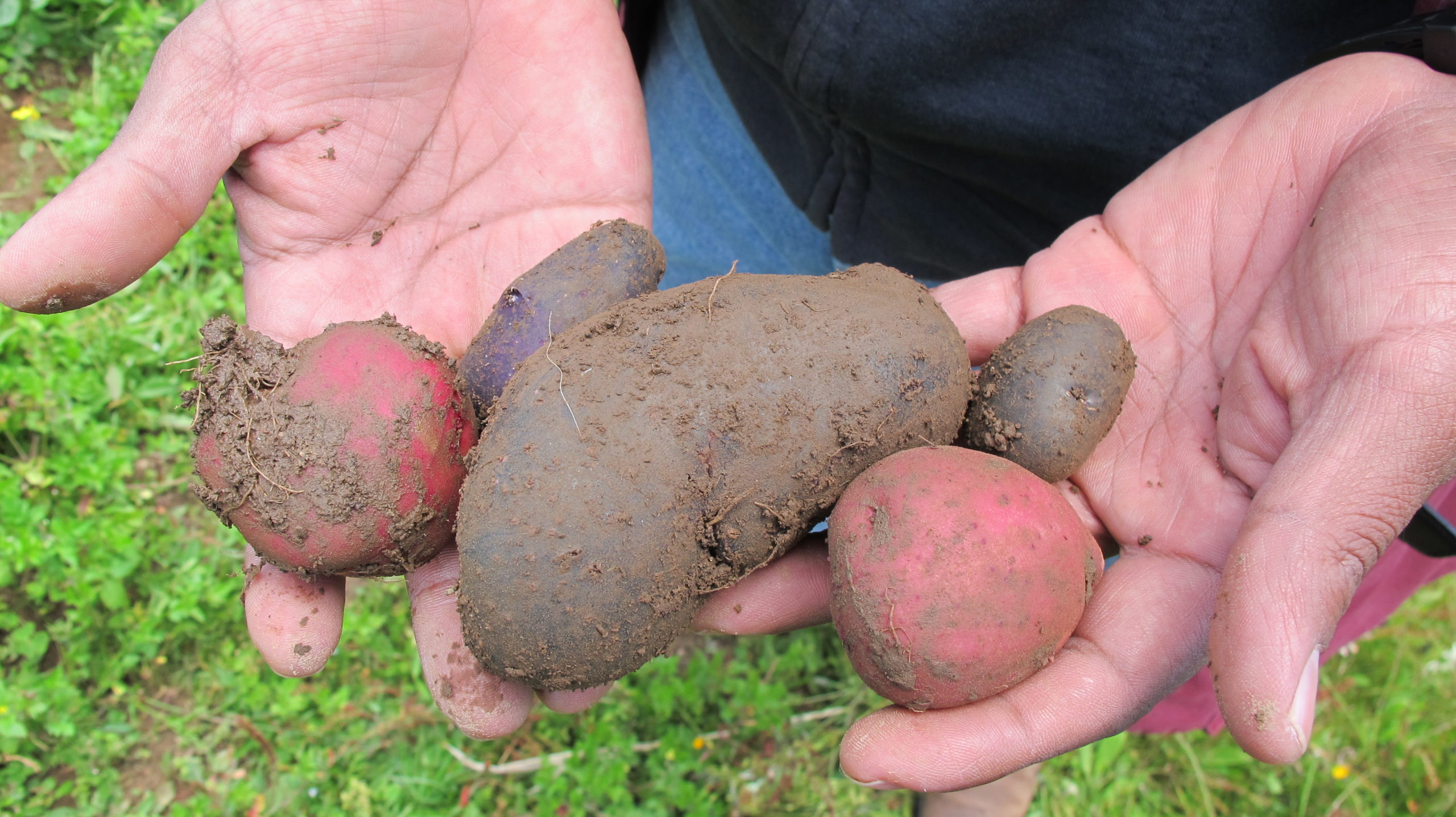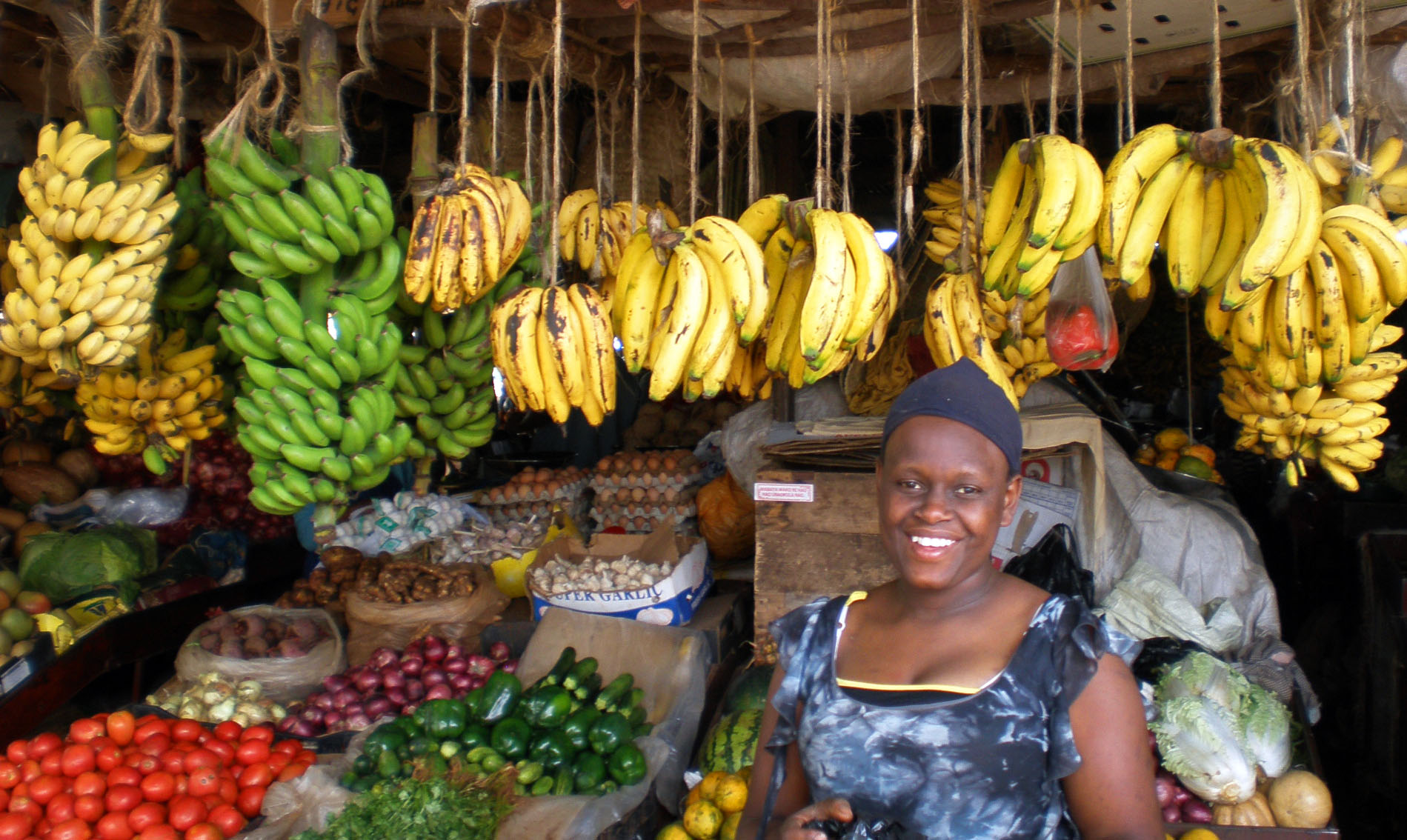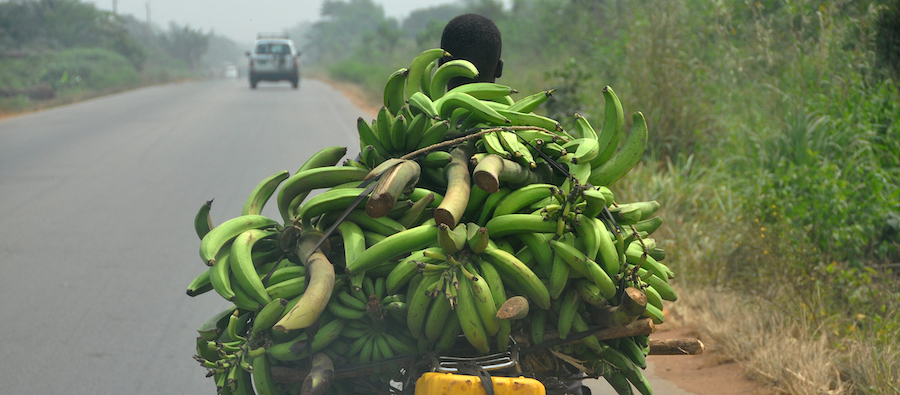In 1845, the Irish Potato Famine took hold, leading to the deaths of one million people and the mass emigration of a million more in the years that followed. The root of the problem was a fungal disease, which resulted in a devastating shortage of Ireland’s staple crop and a nationwide population decline of around a quarter.

Potato diversity in Colomi, Bolivia.
Credit: Bioversity International/P. Bordoni
More than a century later, in the 1950s and 1960s, Gros Michel bananas were decimated throughout the tropics by another fungal disease – Panama disease, also referred to as Fusarium wilt. The economic damage was huge. Export trade declined and producers were forced to switch to a disease-resistant variety, the Cavendish banana.
Today’s dominant crops are so for a reason: they tend to be highly productive, hardy or easy for farmers to grow. However, reliance on a single crop type can pose risks. If growing conditions change, these dominant crops may become less well-suited, for instance from the impacts of climate change or due to pest and disease outbreaks.
Agricultural biodiversity – or agrobiodiversity – helps increase the resilience of farmers’ livelihoods, improve people’s diets, manage landscapes more sustainably and safeguard crop breeding efforts into the future.
Why agrobiodiversity matters
Agrobiodiversity refers to both domesticated and wild species that contribute to food production. It underpins nutritious diets and human health as well as helping conserve ecosystems by increasing the abundance of pollinators such as bees and birds, and keeping soils healthy.
Food systems are comprised of many different actors including consumers, farmers, agri-food companies, local and national governments, and development agencies. All have diverse needs and concerns, which must be addressed if agrobiodiversity is to be embraced and more sustainable food systems established.

Crop diversity on display at a market in Ecuador.
Credit: Bioversity International/F.Finocchio
Reaping rewards throughout the value chain
For farmers, on-farm conservation is one key way to maintain or build agrobiodiversity. This approach helps farmers to cope with stresses like climate change, by supporting them to develop new portfolios of adaptive traits. Making the most of local knowledge and natural resources are just some of the conservation methods that farmers can use to improve genetic diversity.
For companies, building reliable supply chains and making a profit are essential. They therefore need to be able to manage risks and align to changing consumer priorities, which are shifting towards healthier and more environmentally sustainable products. Farmers care about decreasing their exposure to risks, including climate change, pests and diseases. Countries are concerned with addressing today’s global challenges, including malnutrition, poverty and climate change. Development agencies are preoccupied with formulating projects that have a positive impact on the health of people and the planet.
For food consumers, more diverse crops help contribute to more nutritious diets. With global hunger rising and a third of the developing world’s population suffering from poor nutrition, diversity in agriculture is essential to improve food security and end severe malnutrition across the globe.
Looking to the future
Conserving genetic diversity is also important for supporting future breeding efforts. One crucial way to safeguard and improve access to genetic resources is through genebanks.
By conserving crop wild relatives, related to the staple foods we eat, useful traits can be preserved to help scientists develop more resilient or disease-resistant crop varieties. For example, the International Musa Transit Centre preserves the world’s largest collection of banana diversity, with more than 1,500 samples of edible and wild species of banana. This means that if conditions change and another event like the Panama disease outbreak occurs, genebanks can equip researchers to develop new, fortified strains of banana crops.
Improving access to agrobiodiversity data
Recognition of these different approaches and priorities is central to the Agrobiodiversity Index, a tool focused on improving access to data and knowledge in order to encourage better use and conservation of agrobiodiversity at all levels – from individual to global. In our era of information overload, food producers, consumers and governments alike need reliable data for decision-making, that cuts through complexity to find evidence-based solutions. They also need support to understand how they are doing – whether they are making progress, for instance, or how they compare with their peers.

Dessert bananas on display at a fruit and vegetable market in Nairobi, Kenya.
By detecting agrobiodiversity-related risks and opportunities for more sustainable and resilient food production and markets now and into the future, the Agrobiodiversity Index serves as a valuable tool for those involved in managing food systems. It helps them understand why they should care about agrobiodiversity and what they can do to improve it.
Through embracing solutions that enhance the use and conservation of agrobiodiversity, food systems can be made more sustainable and deliver better food security and nutrition to people around the world.




